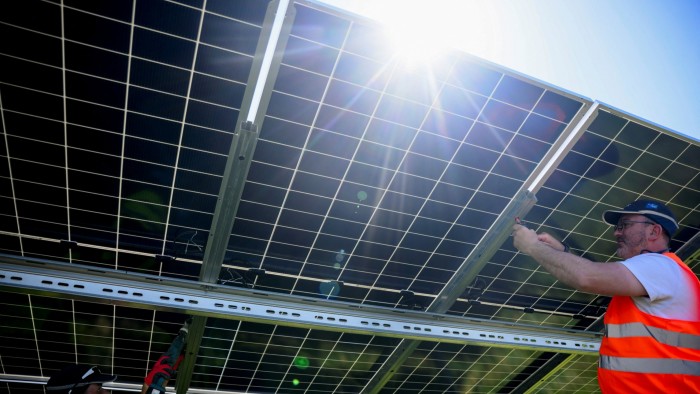Unlock the Editor’s Digest for free
Roula Khalaf, Editor of the FT, selects her favourite stories in this weekly newsletter.
US green bond sales have fallen since Donald Trump won a second term as president, as companies seek to avoid unwanted attention by backing away from or playing down their environmental activities.
A total of $24.4bn in green bonds was issued in the US this year to the end of May, according to data from the Climate Bonds Initiative, down from $43.3bn in the same period last year and the lowest total in data going back to 2021.
US green bonds this year accounted for about 9 per cent of the $260bn issued globally, compared with more than 14 per cent of the overall market in 2021.
The drop-off in the US contrasts with Europe, where activity is still above 2021 levels, and comes amid concerns over the potential political repercussions for companies and executives of embracing green finance under a Trump administration that has shown itself largely hostile to environmental policies.
“No one wants to have a target painted on their back,” said Sean Kidney, founder of the Climate Bonds Initiative.
While potential unwanted scrutiny from the administration was not the sole factor depressing green bond issuance, it was a significant one, he added.
However, shrinking cost savings from selling green debt and falling demand among US investors have also weighed on issuance in recent years.
“All of this makes for an environment prone to ‘greenhushing.’” said Hortense Bioy, head of sustainable investing research at Morningstar.
In contrast with several years ago, when more corporates were keen to trumpet their environmental, social and governance (ESG) credentials, some US companies have been quietly funding green projects through traditional debt sales without slapping a green label on the bonds used to finance them.
Bankers focusing on the clean energy finance sector predict companies will continue to sell debt to fund projects such as wind and solar power generation during Trump’s second term, but say these efforts increasingly could be financed without advertising them as green initiatives.
“You might still do it but not brag about it,” one banker said, noting a similar trend among investment management firms. “You’re not going to be bragging about launching new funds that invest in green stuff.”
Green debt sales peaked in 2021, with more than $93bn of such bonds sold in the US for the year as a whole. But support for ESG investing has been in decline across much of the US financial services industry since then, with the start of the backlash preceding Trump’s return to the White House earlier this year.
Republican state officials across the US took steps to prohibit ESG investing in 2023 and 2024, arguing that the movement was hostile to the country’s fossil fuel industry. Asset managers and banks responded by leaving industry groups focused on reducing greenhouse gas emissions, while investors also exited the sector, resulting in the largest ever outflows from US ESG funds earlier this year.
Trump has been open about his desire to boost the US fossil fuel industry while rolling back environmental regulations enacted by his predecessor, Joe Biden. The Trump administration is in the process of repealing a Biden-era rule that allows retirement plans to consider ESG factors when choosing investments.
Another issue for companies deciding whether to issue green debt is the amount they can expect to save on financing costs compared with traditional debt. Known as the “greenium”, this discount on borrowing costs was once lucrative. But it has shrunk in recent years, said Bioy.
A portfolio manager who specialises in sustainable investing said that “at the end of the day, if the company knew they would be able to receive advantageous funding rates, they’d be able to get over that” and still issue green bonds.
“Issuers will continue to do that [fund renewable projects] — they just may not label it green,” the manager added.
